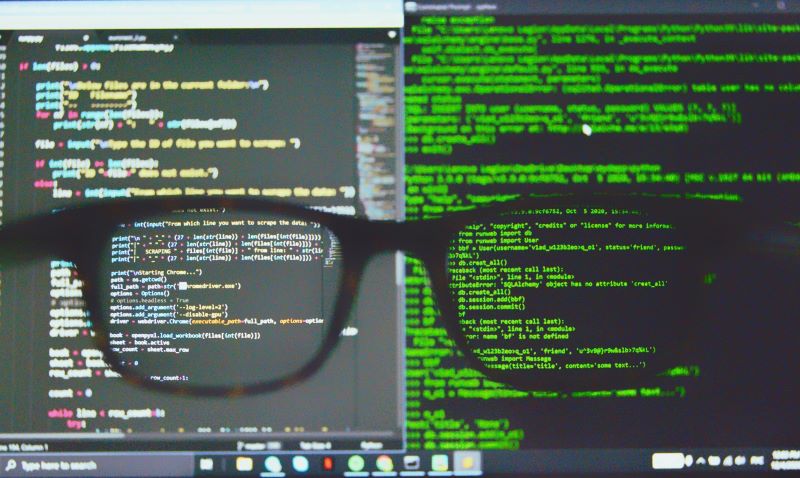Earn a certificate & get recognized
Bagging and Boosting
Instructor:
Mr. Anirudh RaoAbout this course
Ensemble learning is a very important part of machine learning that has the capability to devise solutions and applications across multiple domains out there. In ensemble learning, multiple algorithms are put into play by training them to solve the same problem and this will help us to combine the result and get overall better performance. Since machine learning is all about extracting the maximum performance when working on a large amount of data, it becomes very important that you as a learner have a complete understanding of how these concepts work. Keeping exactly that in mind, we here at Great Learning have come up with this course on bagging and boosting to help you understand the concepts completely and to give you a solid foundation of the same.
Check out our PG Course in Machine learning Today.
Course outline
Working with Prediction Errors
Understanding Ensemble Methods
Introduction to Bagging
Introduction to Boosting
Bagging vs Boosting
Get access to the complete curriculum once you enroll in the course
Our course instructor

Mr. Anirudh Rao
Machine Learning Expert
Frequently Asked Questions
Will I receive a certificate upon completing this free course?
Is this course free?
What is bagging and boosting?
Bagging is an ensemble learning technique that aggregates the results of several same types of data subsets formed on the original data set to make a final prediction. Boosting is another type of ensemble learning technique that forms sequential sets from the original data-set, every time overcoming the drawbacks of the previous model with misclassified data of previous models.
Is bagging faster than boosting?
Learning of multiple weak learners takes place in parallel in the case of bagging. Boosting carries out learning of subsets that take place in series. Hence, bagging can be considered faster than boosting. Though, the time difference is not a parameter to judge as the speed factor can be overlooked depending on the necessity of the situation or model. Most of the time, bagging proves to be more suitable than boosting.
How do you choose between bagging and boosting?
Even though both bagging and boosting excel at elevating a model’s accuracy and stability level, they are implemented in different scenarios, and one must know where to apply what. When you want to sort out the overfitting problem of your single model, you would want to go with the bagging method. Boosting, in contrast, can increase the overfitting problem. This is why bagging is much more effective than boosting when it comes to fixing the over-fitting difficulty of a single model. When we want to enhance the model performance, boosting is better than bagging as it aims at getting a better bias and predictive force. If we try bagging in a case where a single model produces low performance, it will not do better. Hence, at such times, boosting is preferable.
Bagging and Boosting
Machine Learning
As you must be already aware that Machine Learning is the branch of Artificial Intelligence (AI) which deals with developing models to predict the results for real-world events as accurately as possible. Various techniques are employed to make a Machine Learning algorithm that is capable enough to allow software applications to predict outcomes with high accuracy without any explicit programming. Historical data are fed to the Machine Learning algos as input to make future predictions by analyzing the trends or patterns. Supervised, unsupervised, semi-supervised, and reinforcement learning are the four basic approaches that can be opted for, depending upon the type of data to be predicted.
Statistics in Machine Learning
Statistics plays a key role in this interdisciplinary field of Machine Learning that finds its major contribution in training the data to make predictions. Making a Machine Learning model through algorithms is substantially governed by the basics of Statistics. From framing the problem to model predictions, everything involves Statistics to draw inferences from a colossal pool of data as per necessity. In short, the deployment of statistical methods aid in speculating answers to the questions about the data thereby enabling the implementation of Machine Learning. Learn Statistics for Machine Learning without any charges here.
Ensemble Methods in Machine Learning
In Machine Learning, one of the most useful techniques to have knowledge of is Ensemble Methods Learning. The elementary idea behind the concept of Ensemble Learning is to train different models for the same problem and combine them to improve the results. Here comes the notion of weak and strong/ robust learners or models. Ensemble Methods suggest that a right combination of weak learners or models leads to the development of a strong model or learner with arbitrarily higher accuracy. Ensembles help in cutting down the noise, bias, and variance factors that lead to prediction errors. From here on, we can categorize Ensemble methods into three types – Bagging, boosting, and Stacking. Whenever we apply to bag or boosting to any given dataset, we start with choosing a base learner algorithm.
Single Weak Learner
The quantities of data, distribution hypothesis, the dimensionality of the space, etc. are the deterministic factors in choosing a base model. The most ideal base model is supposed to have the lowest variance and bias. A single base learner might be enough for very simple problems to solve the problem. Still, it is not easy to build a model where the underlying complexity of the data increases. We need an appropriate number of degrees of freedom related to our model for being able to solve a problem. Since the performance of a single base model is very poor, it is known as a weak learner, and we require tweaking our approach a bit at this point. As per the theory of ensemble learning, we combine several of these single weak models for attaining higher accuracy and stability in solving a complex problem.
Bootstrapping
We can understand the variance and bias with the data set through random sampling with replacement. This sampling technique in which we create subsets with replacement from the original dataset is known as Bootstrapping. Bootstrap provides a more clear understanding of the given dataset’s mean and standard deviation as the probability of selection for each example in the dataset is the same.
What is Bagging?
Bootstrap Aggregating, often termed as Bagging, is used in statistical classification and regression to increase the stability and accuracy of a Machine Learning Model. This ML ensemble meta-algorithm follows the model averaging approach by reducing the variance and consequently avoiding overfitting. Its application can be commonly found with decision tree methods with higher variances. Here, each base model created on a subset formerly originated from the source data set is trained in parallel and independent of each other on the same training set. The predictions from these multiple models are merged to obtain the final predictions.
What is Boosting?
Boosting is another ensemble modeling technique that enhances the stability and accuracy of a Machine Learning model by building a robust model from several weak models. Here multiple models are created, one after the other. Each next consecutive model is based on the previous model. The first step is to create a base model from the given training data set, generating predictions. The next model, which is built, bases its pillars on the failures of the first one. The failures of the second model are cut down in the third one and so on. Series of models keep on adding in the same way until the final correct prediction is obtained from the training data.
What is Stacking?
The stacking technique of ensemble learning is concerned with merging heterogeneous weak learners. The only difference is that there is no such empirical formula for the weight function in stacking, unlike boosting. Here each meta-model is trained in parallel and afterward combined to get a more accurate model based on heterogeneous weak model predictions. The weight is computed by introducing a meta-level and using another approach to estimate the input along with the output of every model. Meta-learning is applied to each different weak learner. It can have bagged as well as boosted models as weak learners. Although interpreting stack models can be difficult to a great extent at times, they are the to-working models among the three ensemble methods.
Bagging v/s Boosting
Similarities
-
Both bagging and boosting are types of ensemble methods.
-
Both are based on the hypothesis of getting multiple learners from one learner.
-
Overall, random sampling is employed to generate different training data sets.
-
The final prediction is based on the prediction of meta-weak learners in both cases.
-
Both of these techniques work well at minimizing variance and boosting stability.
Differences :
-
Bagging combines predictions of the same type, whereas boosting combines predictions of different types.
-
Bagging aims at minimizing variance, and on the other hand, boosting aims at increasing predictive force and reducing bias.
-
Each model in bagging is of equal weight, and the performance of the models determines their weight in case of boosting.
-
Each model is developed independently from the subsets. Each new model is based on the performance of previous models.
-
Bagging draws multiple training subsets randomly with replacement from the original data set. Boosting takes the misclassified data of previous models as the input for every new subset.
-
Bagging is implemented in the cases with high variances (unstable classifier), whereas boosting is implemented in the cases with high bias (stable and simple classifier).
What is the significance of learning Bagging and Boosting?
The question arises: Why do we need to learn to bag and boost, and even the entire ensemble method learning? So, know that the motive of Machine Learning is always to figure out an ML algorithm that is capable of making accurate predictions. The more accurate the prediction, the better the model is considered. In order to deploy a Machine Learning model and train a given data set to predict with utmost accuracy, the technique of ensemble method learning is made use of. The fundamentals of Machine Learning start deepening from the concept of ensembles. Hence it is essential to know how bagging and boosting works and where to apply them.
About the ‘Bagging and Boosting’ Course
This course on Bagging and Boosting consists of one hour-stretched video content along with a quiz at the end to test your learning. On clearing the quiz, you earn a course certificate for absolutely free. The Great Learning team has carefully designed the course curriculum to curate comprehensive and fruitful learning of the Bagging and Boosting skills. Introduction to Machine Learning and Basics of Statistics is the potential prerequisite for this course.
Apart from imparting theoretical knowledge about Bagging and boosting, this course will guide you through a practical demo on Python towards the end. This course kick starts with a lecture on dealing with prediction errors and paves to explain the fundamentals of bagging and boosting to the learners. This online certification course will empower you with a new Machine Learning skill and raise your resume weightage. Enroll in this free course now and start your learning journey right away. Happy learning!

 4.63
4.63










.jpg)















.png)



.jpg)


.png)





.png)
.jpg)
.jpeg)
.jpg)
.jpg)




.png)


.png)




.png)
.png)
.png)
 (1).png)


.png)
.png)





.png)
.png)
.png)
 (1).jpg)

.png)
.png)
.png)
.jpg)
.jpg)
.png)







.jpg)












